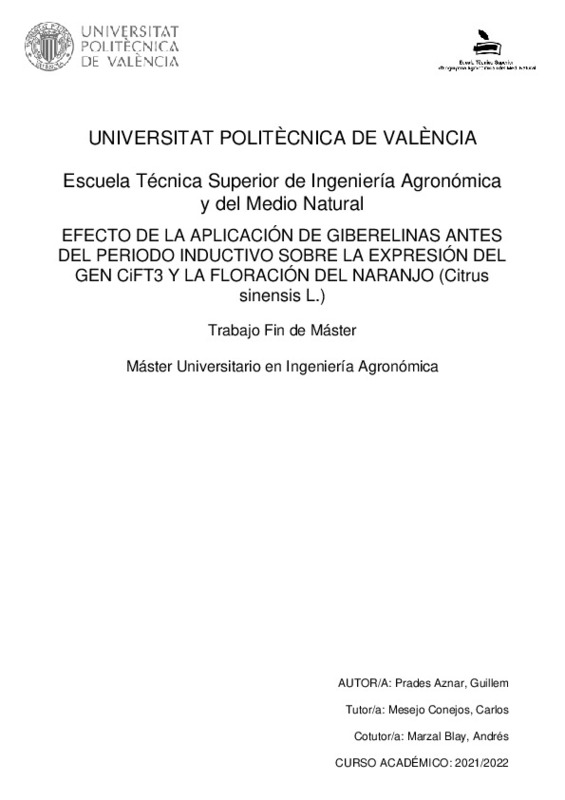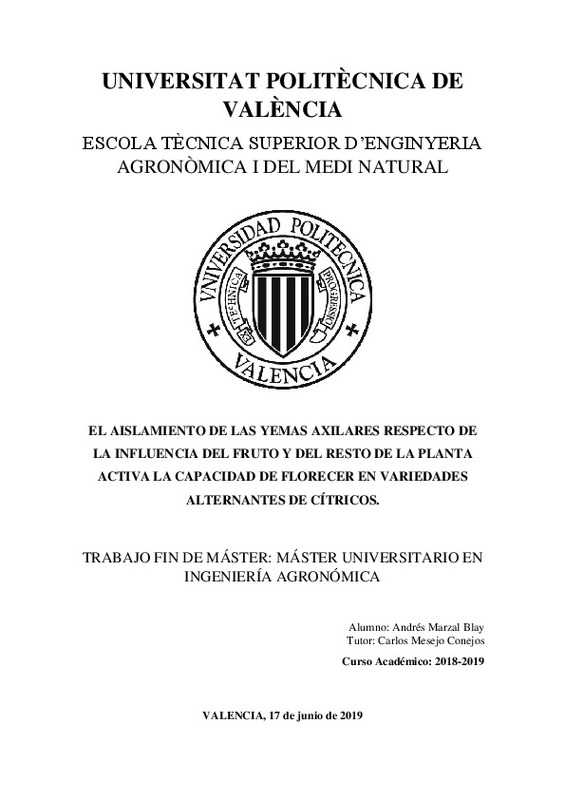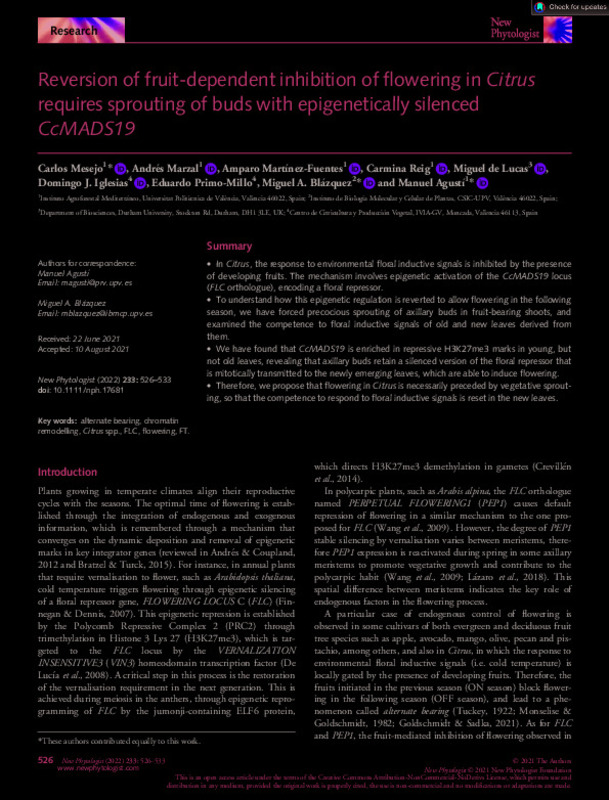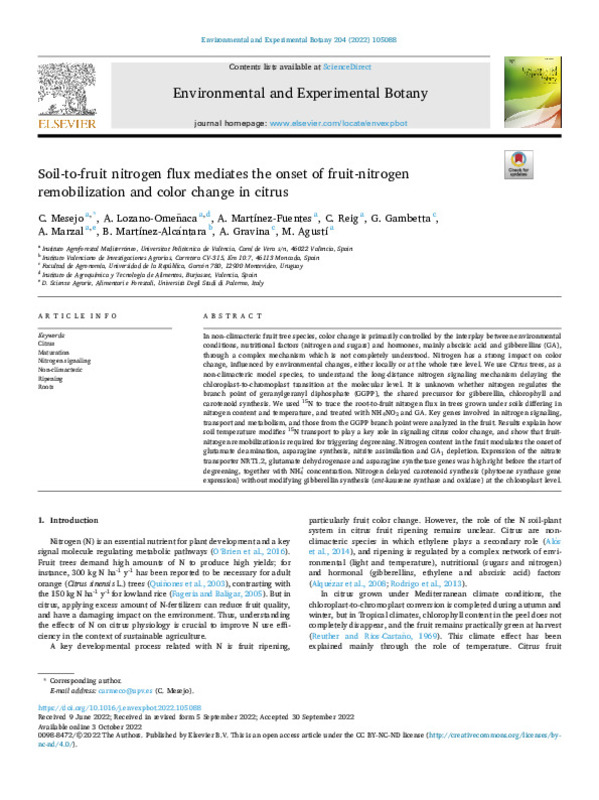

Listar por autor "Marzal Blay, Andrés"
RiuNet: Repositorio Institucional de la Universidad Politécnica de Valencia
- RiuNet repositorio UPV
- :
- Listar por autor
JavaScript is disabled for your browser. Some features of this site may not work without it.
Buscar en RiuNet
Listar
Mi cuenta
Ayuda RiuNet
Admin. UPV
Listar por autor "Marzal Blay, Andrés"
Mostrando ítems 1-7 de 7
-
Prades Aznar, Guillem (Universitat Politècnica de València, 2022-10-21)[ES] La aplicación de giberelinas (GAs) para regular la floración es una técnica eficaz en la mayoría de especies de cítricos. La respuesta al tratamiento depende críticamente de la época de aplicación, en interacción con ...
-
Marzal Blay, Andrés (Universitat Politècnica de València, 2019-07-16)[ES] La alternancia de cosechas es un problema de producción por el cual un árbol es incapaz de florecer, y, por tanto, producir frutos, después de una cosecha elevada. La intensidad de este fenómeno es distinta en función ...
-
Mesejo Conejos, Carlos; Marzal, A.; Martinez Fuentes, Amparo; Reig Valor, Carmina; de Lucas, M.; BLAZQUEZ RODRIGUEZ, MIGUEL ANGEL; Agustí Fonfría, Manuel (International Society for Horticultural Science (ISHS), 2022)[EN] Citrus trees are polycarpic species that only produce single flowers or determinate inflorescences, so that vegetative growth is required at the axillary buds to renew the polycarpic habit. In addition, in some ...
-
Mesejo Conejos, Carlos; Marzal, A.; Martinez Fuentes, Amparo; Reig Valor, Carmina; Agustí Fonfría, Manuel (Elsevier, 2021-02-27)[EN] While the ethylene-auxin interactions are well documented in model dicots such as tomato (climacteric fruit) during mature fruit abscission, the process is not clearly understood in citrus (non-climacteric fruit). The ...
-
Mesejo Conejos, Carlos; Marzal Blay, Andrés; Martinez Fuentes, Amparo; Reig Valor, Carmina; de Lucas, Miguel; Iglesias, Domingo J.; Primo-Millo, Eduardo; BLAZQUEZ RODRIGUEZ, MIGUEL ANGEL; Agustí Fonfría, Manuel (Blackwell Publishing, 2022-01)[EN] In Citrus, the response to environmental floral inductive signals is inhibited by the presence of developing fruits. The mechanism involves epigenetic activation of the CcMADS19 locus (FLC orthologue), encoding a ...
-
Mesejo Conejos, Carlos; Lozano-Omeñaca, Aurora; Martinez Fuentes, Amparo; Reig Valor, Carmina; Gambetta, G.; Marzal, A.; Martínez-Alcántara, B.; Gravina, A.; Agustí Fonfría, Manuel (Elsevier, 2022-12)[EN] In non-climacteric fruit tree species, color change is primarily controlled by the interplay between environmental conditions, nutritional factors (nitrogen and sugars) and hormones, mainly abscisic acid and gibberellins ...
-
Marzal Blay, Andrés (Universitat Politècnica de València, 2025-02-22)[ES] En los cítricos, la baja temperatura promueve la inducción floral en otoño-invierno aumentando la expresión del gen promotor CiFT3 (homólogo en los cítricos del gen FLOWERING LOCUS T). La presencia de un gran número ...
Mostrando ítems 1-7 de 7

Universitat Politècnica de València. Unidad de Documentación Científica de la Biblioteca (+34) 96 387 70 85 · RiuNet@bib.upv.es







